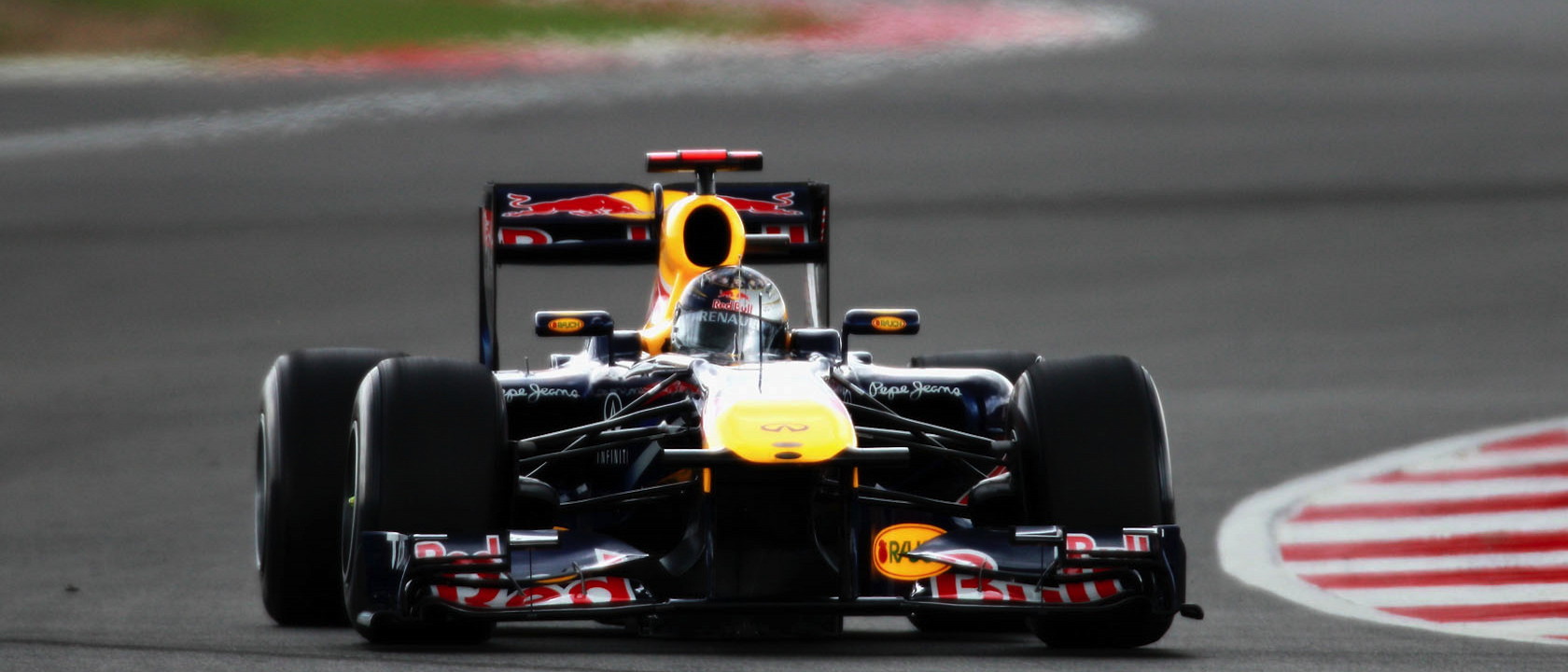It appears the FIA has it out for Red Bull Racing. Not content with the fabulous start to the current 2011 Formula One season, the international motor sports regulatory authority has taken two steps in recent weeks that strike directly at what Christian Horner’s team (with Adrian Newey’s car) and its superlative driver Sebastian Vettel have achieved this year so far.
The first, at Sunday’s European Grand Prix in Valencia, was a prohibition on changes to electronic engine mapping between qualifying and race day. That’s a complex technical subject which is part of FIA’s attempt to mandate digital equality for the teams by use of a common electronic control unit (ECU). Nonetheless, it didn’t matter. Vettel managed his 7th pole position out of eight races and set the mark for most consecutive finishes in first or second to begin a new F1 season.
As Peter Windsor observes, this was
a reflection of Seb Vettel’s total and easy-looking domination of F1, 2011-style. DRS? No one in Valencia could get near enough to Seb even to try it; ban changes to the engine maps after qualifying? All that did was give us a Red Bull Racing one-two on Saturday — and…it would appear…a much less competitive Vodafone McLaren Mercedes team on Sunday.
Full European Grand Prix Race Analysis | The Race Driver
Now, coming just ahead of the British Grand Prix at Silverstone, is another “clarification” of the F1 technical regulations. This time, FIA’s technical director Charlie Whiting has dictated that F1 cars’ exhaust gasses may no longer be used to augment downforce. Known as a “blown exhaust” or “off-throttle exhaust blown diffusers,” this technology directs airflow from the exhaust underneath the car, when the driver is not accelerating (and thus airflow is down), to increase suction and traction. Reminds one of the ground effects days from the late 1970s. Or the Brabham BT46 “fan car” of 1978. Ingenious.
Horner suggested that rival teams hoping the FIA rules directive would hamper Red Bull’s overall form were likely to be disappointed. “The secret to a quick car is that there is never a silver bullet,” he said. “It would be wrong to expect that this has been the sole reason behind the performance of the car, either this year or last year or the year before that. It is one of those things.”
Horner blasts rule changes timing | Yahoo! Eurosport.
It is not at all clear that Red Bull actually enjoys any advantage from blown exhaust diffusers. (Renault has integrated them into its design far more closely.) And FIA denies the in-season changes are directed against RBR. What is plain, however, is that those in charge of Formula 1 racing today continue to see a need to revise the sport’s technical regulations, at mid-season, to level the playing field competitively. Whether or not the tweaks will actually cut into the one-second per lap gap Red Bull convincingly demonstrated in Valencia is altogether uncertain. Fernando Alonso, for instance, thinks the World Championship has already been decided. ”We’re still eight tenths to a second behind, so anyone who thinks we can win a championship being that far behind doesn’t understand Formula One,” says the two-time F1 titleist. Fernando Alonso admits championship is out of Ferrari’s hands | Telegraph.co.uk.
In our view, that’s all well and good. Formula One historically has been about technological innovations exploited by savvy drivers who understand the relationship between automobile engineering and race performance. The saga of F1 is replete with time periods in which one team, by virtue of a technical advance, achieves temporary dominance for a season or more. Witness Lotus in 1962-63 with the monocoque chassis, Lotus in 1967-68 with the Cosworth DFV and again in 1978 with ground effects, McLaren in 1988-91 with carbon fiber and aerodynamic design, Williams in 1992-93 with active suspension and, of course, Ferrari in 2000-04, which ushered in today’s environment of relentless, all-season long modifications and improvements to the cars. The rest of the F1 paddock struggles to catch up, but they always do, and rather quickly in fact. Look at Brawn GP in 2009. Like Michael Schumacher, we are “not really a friend of rule changes during a season.”
The take away from the most recent flurry of FIA technical rules changes is that this season’s performance by Sebastian Vettel is historically unprecedented. Already having posted 22 pole positions and having led in 2011 more Grand Prix laps then throughout his entire championship-winning season of 2010, Vettel has put on an astonishing show. He’s simply quicker than the rest and rarely (but not never) makes mistakes.
So let Charlie Whiting and the FIA go gunning for Red Bull. It probably won’t make a difference. And it shouldn’t.



